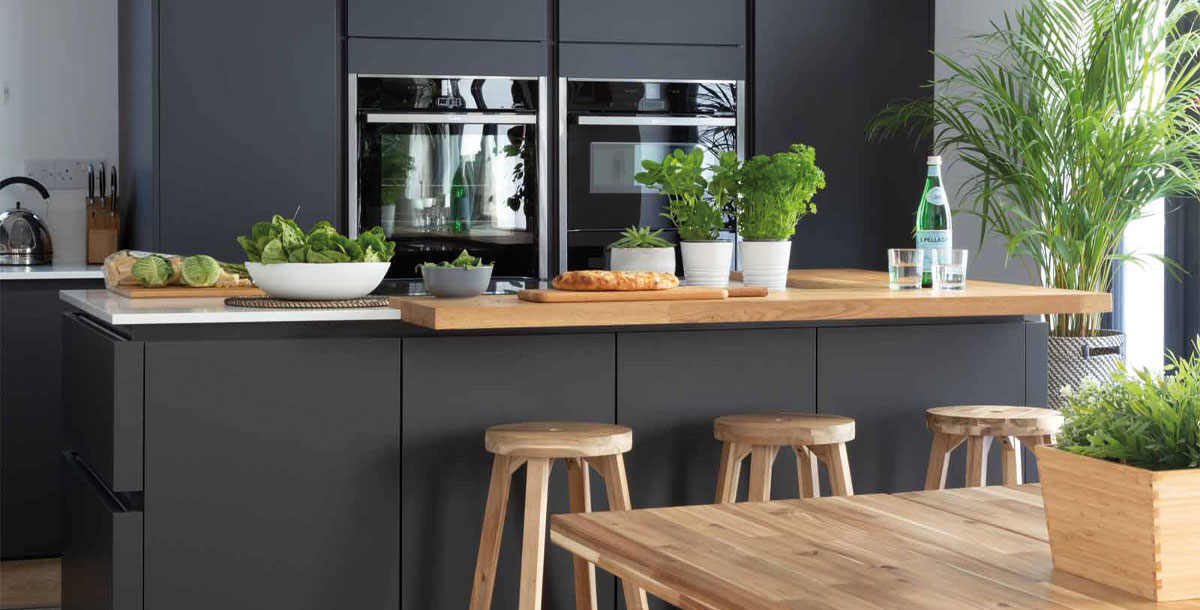Modern life has taught us to shield ourselves from the elements by blocking the outside and, subsequently, nature. We can travel to and from locations using a motorway or going from train station to train station without embracing our natural environment.
Biophilic architecture and design marries the domestic comfort of home with the peaceful and serene effect nature has on well-being. Healthline experts confirm that indoor plants are beneficial to health. But how is it possible to integrate nature in the heart of our home with a biophilic kitchen?
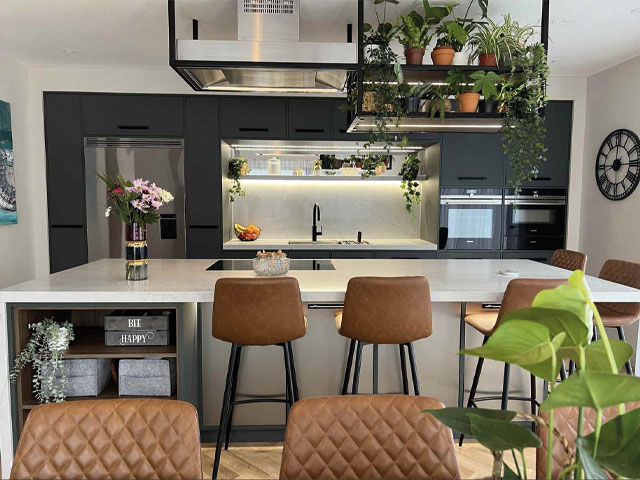
A biophilic design natural kitchen with natural stone countertops
Embrace natural light
So what is biophilia? If you are unfamiliar with the Greek-originated word, ‘philia’ means ‘love of’ and ‘bio’ means ‘nature’ or ‘life’. Designers of biophilic cities, offices and homes embrace the love of nature. And doing so is easier than thought.
According to Opinium, western populations spend 90% of their time indoors, despite a lack of daylight negatively impacting mood and circadian rhythm. To create a natural sanctuary in the kitchen, more natural light is needed.
If renovating, add a kitchen conservatory area, a small orangery kitchen extension or an extra window to renovation plans. And if manipulating the walls isn’t an option, perhaps a kitchen skylight. Each window will add well-needed light and fresh air.
Masterclass Kitchens can maximise homeowners’ natural light exposure, offering chef’s tables, which can fit in shallow window alcoves. And similarly provide open shelving and bi-fold cabinet doors to minimise light obstruction. Together, these components perfectly execute biophilic design.
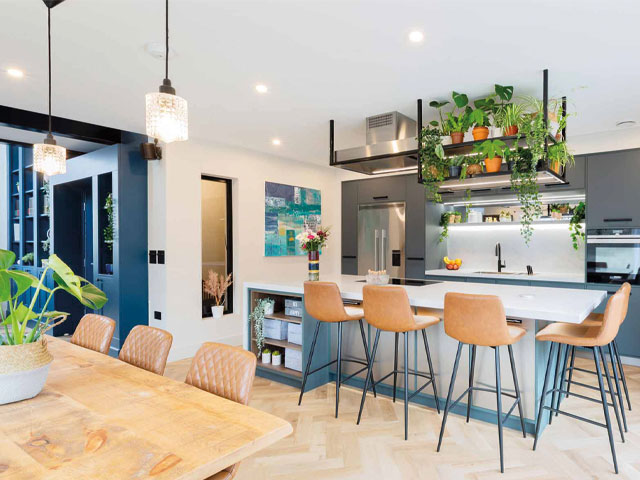
A natural-light-flooded kitchen that follows biophilic theory design principles
Include natural wood and stone
Biophilic design covers more than just light and plants. Indeed, stone and natural wood also play a part. What has been found is that a lot of these principles overlap with Scandi concepts like Hygge and other cultures reach these similar conclusions.
Much like with Hygge, natural flagstone flooring and wool rugs will appeal to biophilic interiors, but so will installing minimally processed features like wood crate drawers, wood-effect drawers and stone-effect worktops. If these options are chosen then dark kitchens provide the perfect backdrop.
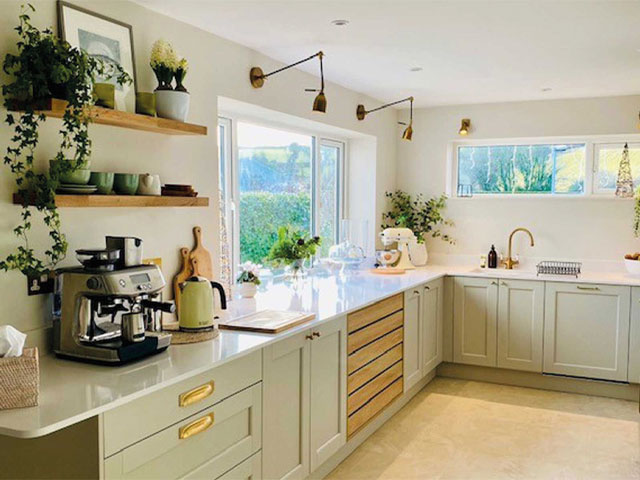
A biophilic kitchen with decorative stone worktops and wood walnut shelves
Harness house plants
Undeniably vital, house plants are integral to biophilic kitchen design and they’re the easiest component to install, not least on solid oak shelving. Not only do they oxygenate the air, but their presence is proven to cause relaxation in humans in a way that artificial house plants can’t replicate.
Whatever house plants are chosen should depend on the style of the kitchen. For example, if Japanese design is preferred, potted topiary trees and a Japanese peace lily might work. A typical classic kitchen, on the other hand should have wall hanging plants.
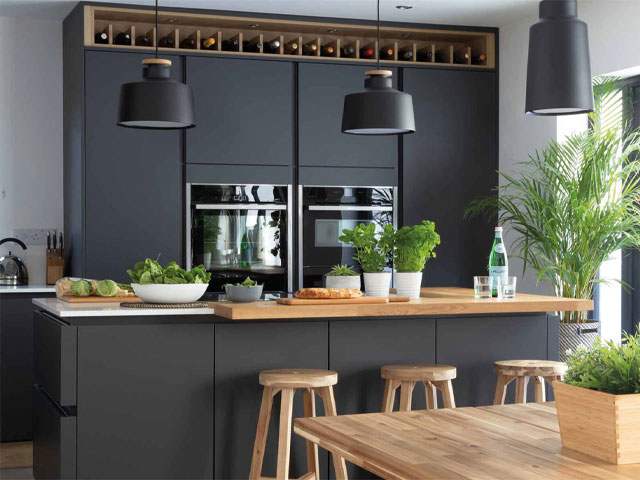
Biophilic interior design demonstrated in a handleless, modern kitchen
Add pets to biophilic design
Pets are a great remedy for those lacking nature in their lives. Not only do they provide companionship but they also encourage us to walk in nature.
Masterclass Kitchens factor pets into their kitchen designs for clients who love animals. Many ask to leave gaps for dog beds and cat perches. The spaces below chef’s tables and in shelving cubby holes work particularly well if a pet-friendly kitchen is desired.
If more help is needed finding effective kitchen storage solutions that aid biophilic design then check out Masterclass’s range for a solid foundation.
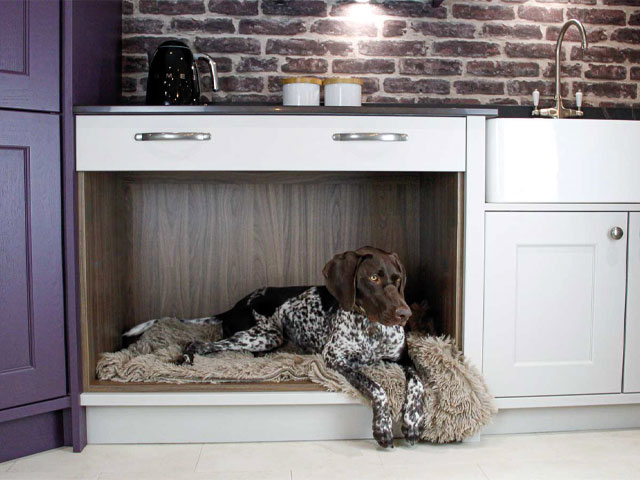
Biophilic design style kitchen featuring a pet area under a chef’s table

